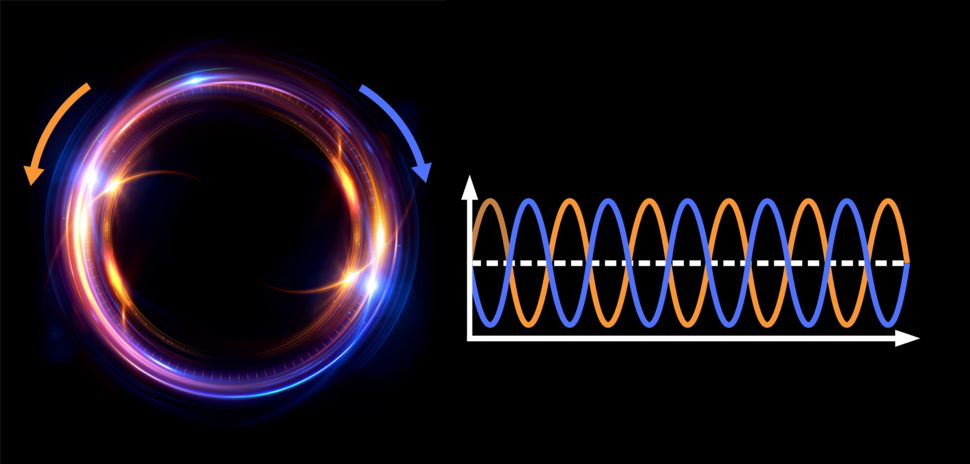When Light Beams Talk to Each Other

Microresonator and Light Beams
Light, when locked in a tiny ring called a microresonator, shows amazing behaviour: Two beams, going in opposite directions, become linked and start switching. This bizarre photonic effect could be used to build optical circuit components and encode information.
When laser light is concentrated to high intensities, it can start to alter the optical properties of a material, leading to unexpected and interesting effects. An international team of researchers from the Max Planck Institute for the Science of Light in Erlangen, the University of Strathclyde in Glasgow, Heriot-Watt University in Edinburgh, and the UK’s National Physical Laboratory in Teddington have demonstrated a new type of interaction between counter-propagating light in tiny glass rings – “microresonators” – that can store light for millions of round-trips. They have now published their results in the highly respected magazine "Physical Review Letters". The team of researchers have used a microresonator to cause light to start pulsing by itself and exchange the dominant direction of propagation. This exchange can be made chaotic or periodic simply by slightly changing the frequency of the input laser. Their findings can help to create new kinds of photonic chips for all-optical switching and cryptographic devices.
Spontaneous symmetry breaking leads to the pulsating of the light
Researchers are increasingly interested in the bizarre way in which a microresonator can cause two counter-propagating beams of light to ‘talk’ to each other by respectively changing the refractive index ‘seen’ by the other beam. This ‘cross-talk’ – called cross-phase coupling – causes different amounts of the two beams to circulate within the microresonator, despite sending the same laser power in each input. This is a ‘spontaneous symmetry breaking’ phenomenon. In their work, the scientists found that, when in this symmetry-broken state, the light in the microresonator can become more unstable still, by pulsing in time. These pulses in brightness eventually become large enough that the two beams take it in turns to be the brightest: they regularly or chaotically switch dominance hundreds of thousands of times in a single second.
‘The really fascinating thing is that, despite having lost its symmetry (one of the two beams is brighter than the other), the light in the resonator is doing its best to restore that old symmetry by switching whichever direction is brightest,’ says co-lead author Michael Woodley, now with the Quantum Measurement Lab at Imperial College London.
“These findings are exciting, not only for fundamental research but also for learning about the exotic ways in which light can behave in integrated photonic circuits,” says Pascal Del’Haye, co-author and head of the independent Microphotonics Research Group at the Max Planck Institute for the Science of Light. “The new research results enable us to fabricate a range of tiny all-optical, microresonator-based devices for switching and routing of light in real-time, encoding signals, and generating cryptographic algorithms using chaotic pulses.”
Further information:
Pascal Del’Haye
Microphotonics Research Group
Contact
Edda Fischer
Head of Communication and Marketing
Phone: +49 (0)9131 7133 805
MPLpresse@mpl.mpg.de





